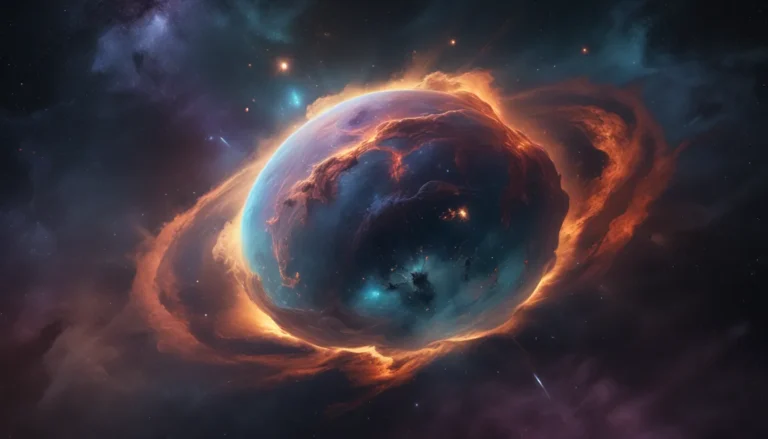The pictures we use in our articles might not show exactly what the words say. We choose these pictures to make you interested in reading more. The pictures work together with the words but don’t take their place. The words still tell you the important facts.
Embark on a journey through space as we uncover the astonishing facts surrounding the Cosmic Background Explorer (COBE), a groundbreaking mission led by NASA in the 1990s. This extraordinary space observatory revolutionized our understanding of the universe and paved the way for new realms of exploration in the field of astrophysics. Join us as we delve into the universe of COBE and explore its monumental contributions to unraveling the mysteries of the cosmos.
Unveiling the Marvels of the Cosmic Background Explorer (COBE)
The Cosmic Background Explorer (COBE) was a pioneering mission launched by NASA in 1989 with the aim of studying the cosmic microwave background radiation. This remnant radiation from the early universe provides valuable insights into the formation and evolution of the cosmos, reshaping our understanding of the universe.
Groundbreaking Discoveries
COBE made history by detecting the first evidence of small temperature fluctuations in the cosmic microwave background, confirming the Big Bang theory and supporting the concept of an expanding universe. Its precise measurements, with an accuracy of one part in 100,000, offered scientists detailed data to delve into the structure and composition of the universe.
Nobel Prize-Worthy Contributions
In recognition of its groundbreaking findings, COBE's work led to the awarding of the Nobel Prize in Physics to John C. Mather and George F. Smoot in 2006. Their discovery of the black body form and anisotropy of the cosmic microwave background radiation cemented COBE's reputation as a trailblazer in astrophysics.
Advancements in Cosmology
COBE's legacy extends beyond its mission lifespan, setting the stage for subsequent missions and experiments aimed at unraveling the origins of the universe. Notably, the mapping of cosmic microwave background fluctuations by the WMAP and Planck satellites built upon COBE's foundational work.
Instrumental Findings
Equipped with state-of-the-art instruments including the Differential Microwave Radiometer (DMR), the Far Infrared Absolute Spectrophotometer (FIRAS), and the Diffuse Infrared Background Experiment (DIRBE), COBE paved the way for innovative research in astrophysics.
Legacy and Impact
The invaluable data collected by COBE during its four-year mission continues to be a wellspring of information for scientists worldwide. Its groundbreaking work has not only furthered our understanding of the universe but also served as a blueprint for future space missions, exemplifying NASA's commitment to pushing the boundaries of space exploration.
Conclusion
In conclusion, the Cosmic Background Explorer (COBE) stands as a testament to human ingenuity and the quest for knowledge. Its impact on our understanding of the universe, from confirming the Big Bang theory to shedding light on the existence of dark matter, has reshaped the landscape of astrophysics. As we continue to unravel the mysteries of the cosmos, COBE's pioneering spirit will guide us towards new discoveries and a deeper understanding of our place in the universe.
FAQs
Q: What is the Cosmic Background Explorer (COBE)?
A: The Cosmic Background Explorer (COBE) is a space satellite launched by NASA in 1989 to study the cosmic microwave background radiation, a remnant of the Big Bang.
Q: What were the main objectives of COBE?
A: COBE aimed to measure temperature variations in the cosmic microwave background radiation, study its characteristics, and explore its implications for our understanding of the early universe.
Q: What major discoveries did COBE make?
A: COBE detected temperature fluctuations in the cosmic microwave background radiation, supported the Big Bang theory, observed the cosmic infrared background, mapped the distribution of matter in the universe, and provided evidence for primordial black holes.
Q: How did COBE impact our understanding of the universe?
A: COBE's observations confirmed the Big Bang theory, highlighted the presence of dark matter, and refined our knowledge of the universe's evolution, from its early moments to the formation of galaxies.
Q: What is the significance of COBE's discoveries?
A: COBE's discoveries have had profound implications for cosmology and astrophysics, providing crucial evidence for the Big Bang theory and guiding our understanding of the cosmic microwave background radiation.
Embark on a cosmic journey as we unravel the wonders of the universe through the lens of COBE, a pioneering spacecraft that continues to inspire and enlighten. Explore the depths of space and the mysteries of the cosmos with NASA's trailblazing missions and groundbreaking discoveries.






